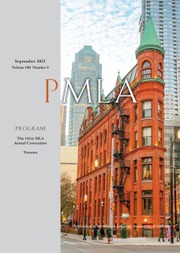Article contents
XVII.—Samson Agonistes Again
Published online by Cambridge University Press: 02 December 2020
Extract
Although Dr. Johnson is one of our best English critics, he has left much that the world would willingly let die. But alas ! the written word is imperishable, and will every now and then repair its drooping head, in spite of the opportunities of oblivion. Johnson's strictures on the shorter poems of Milton have now for a good while been taken for what they are worth; even his severity with Comus is recognized as more than half perversely irrelevant. I say nothing of Paradise Lost, for no other poem so inexorably demands the willing suspension of disbelief which Johnson was incapable of. But recently his obiter dictum that Samson Agonistes is not a dramatic whole in the Aristotelian sense, having a beginning, a middle, and an end; that “ the intermediate parts have neither cause nor consequence, neither hasten nor retard the catastrophe ” has re-entered the listed field. And “ these shifts ” must be “refuted.”
Information
- Type
- Research Article
- Information
- Copyright
- Copyright © Modern Language Association of America, 1921
References
1 See PMLA, xxxv (1920), 375-89. Johnson's Haraphaic utterance, “This is the tragedy which ignorance has admired, and bigotry applauded ” bears its own—one might say ?—unmistakable warning.
2 This was, to be sure, in some sort Johnson's method also.—Editors and commentators, so far as I am aware, with the one exception of A. J. Wyatt (with whose division I cannot agree) have said nothing on another point, but the Samson Agonistes also conforms closely to the (interpolated) exposition of the formal parts of a tragedy in the Poetics: Prologos (1-114), by Samson; Parodos (115-75); four episodes (Manoa, Dalila, Harapha, Officer) with successive stasima; and Exodus (1445-1758). The first episode and the Exodus have Kommoi. Among the extant tragedies there is a good deal of structural variety. The Prologoi show very great diversity. Sophocles was specially careful of form, and yet his Ajax and his Electra have three episodes, while the Antigone and Trachiniae, which are shorter, have five episodes. The Philoctetes is largely kommatic throughout. In the Ajax the second episode contains but 49 lines, the third 468 lines. The second episode of Sophocles' Electra contains 542 lines, or over a third of the whole play. The following proportions have a certain interest:— Prol. Par. All Epis. All Stas. Exod. Total. Oed. Col. 118 51 1143 165 202 1780 S. A. 114 61 1123 156 214 1758 Orestes 139 68 1069 125 392 1693 Milton follows his model even to the detail of a brief quasi-choric ending, like the anapestic close of most of the tragedies.
3 There are, of course, other points raised by Aristotle, but they are not of interest in the present discussion. The question of catharsis I purposely avoid; though the discussion on pp. 366 ff. approaches it. In the strict Aristotelian (pathological) sense there is, I think, no real catharsis in Samson Agonistes, but general purification and ‘uplift’ are obvious enough.
4 One hardly need say that Milton would regard as a ‘ rule ‘ the late convention that no death or violent act should take place in view of the audience; though there is Aristotle's clear statement in Poetics xi, 6.
5 Certainly it has been understood in various ways not all of which can be right. I hope that my own notion, that Dalila returns to Samson with a passionate woman's desire to renew the old life and a proud woman's pique at having lost what she had won, is not too subtle for the context.
6 Sir R. Jebb emphasises this point, but it is a minor one. To be sure, it relates itself to what one may call the sub-plot, Manoa's plan to ransom the hero ; hut Milton makes little of it.
7 Paraphrased from the Poetics xiii. For the last, Aristotle says simply, ; hut from the context, with, just above, the plain statement that “ pity is aroused by unmerited misfortune ” and, just following, the mention of Oedipus and Thyestes, it is clear that signifies here not merely any error of conduct, but unintentional error, a natural human act which only the unmasking of Fate reveals as error; or if the error is not an act but a quality, it is a naturally good quality become evil by exaggeration. Butcher's translation is misleading—unless one interpret “frailty” by aid of the Greek text. Lane Cooper, in his ‘ Amplified “Version ‘ of the Poetics, p. 41, suggests ”blindness of heart“ as an equivalent of And Samson's heart was not blind, but flabby.
8 The happy ending is in large measure hostile to greatly tragic effectiveness; but ‘ averted tragedy ‘ was not unknown to the Greeks. Aristotle instances the Lynceus of Theodectes; one might add the two Iphigeneia's (each in a different way).
9 Jebb took Heracles as his illustration. Equally interesting, though not so favorable to Jebb's position, would be a comparison of Samson and the Ajax of Sophocles. Each hero failed through a flaw in his own soul, “ impotence of mind, in body strong,” and each won his rehabilitation through death.
10 It is partly true, one may admit, that the tragic tone in these dramas is due to the reader's (or hearer's) conscious memory of the antecedent events. (On the other hand, the crucial point is that here the reconciliation is achieved through the tragic struggle, while in Samson Agonistes it is merely a foregone conclusion momentarily lost sight of.
- 1
- Cited by

